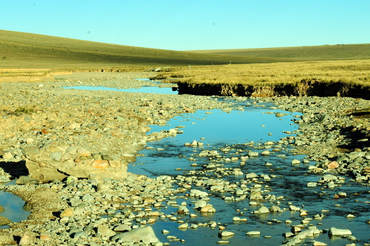
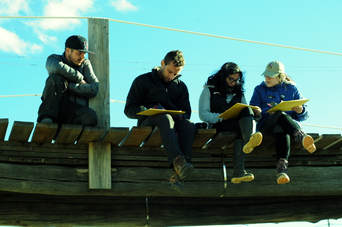
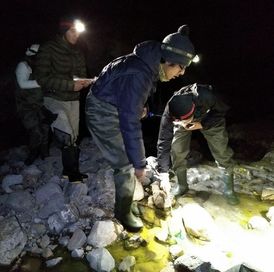
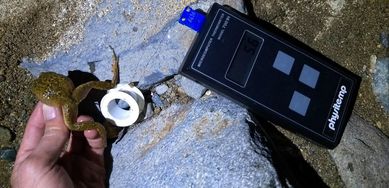
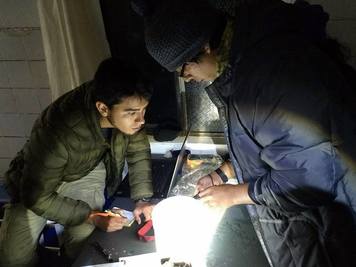
 At the beginning of the month we traveled to Pampas Galeras National Reserve in Peru for the field course on ecology and conservation of high-Andean amphibians. This course gathered 24 participants coming from throughout the Americas, including Peru, Chile, Colombia, Venezuela, the US and Canada, and ranging from undergraduate to graduate students and professionals in biological and veterinary sciences.  The field course was organized in collaboration with the Reserve and with the local NGO Pro Fauna Silvestre. The course was led by instructors Alessandro Catenazzi and Sarah Kupferberg, with lectures by our collaborator Victor Vargas of SERFOR and Pro Fauna Silvestre, and by Allan Flores, head of the Reserve. We emphasized field applications in stream and tadpole ecology, and experimental approaches with mesocosms in the stunning landscape of Pampas Galeras.  The main objectives of the course were to develop skills in experimental design and execution of ecological studies, and to learn new field techniques in population monitoring, field experiments, environmental sampling, and data analysis. Lectures ranged from introduction to physical processes and flow regime adaptations in streams, to tadpole feeding ecology, amphibian ecophysiology, frog skin microbiota and disease ecology. Students then split into six groups to conduct field projects, and everyone helped search for tadpoles and frogs in the frigid nights of Pampas Galeras.  The star of the course was the Water Andean frog, Telmatobius sp., which despite epizootics of chytridiomycosis that have swept central and southern Peru since the early 2000s, persists at Pampas Galeras with good populations. In the picture we are measuring the body temperature of a female, the surface of the creek where she lives often freezes at night.  The six group projects covered the following topics: (1) effects of water depth and stream microhabitat on biofilm productivity; (2) estimating population abundance of adult Telmatobius frogs using photographic recognition and mark recapture estimation; (3) study of skin symbiotic bacterial diversity in adult Telmatobius; (4) effects of mouthpart degradation caused by chytrid on tadpole feeding ecology; (5) bioacoustics of Telmatobius intermedius and Telmatobius sp. and (6) thermal ecology of aquatic frogs.
0 Comments
|
Archives
June 2024
CATENAZZI LABNews from the lab Categories |